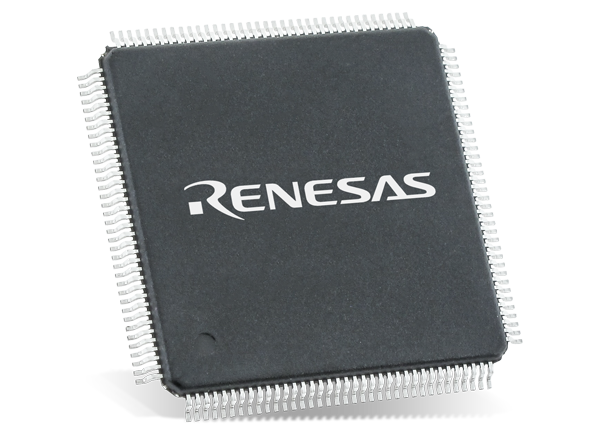
This image has format transparent PNG with resolution 600x436.
You can download this image in best resolution from this page and use it for design and web design.
Microcontroller PNG with transparent background you can download for free, just click on download button.
A microcontroller (MCU for microcontroller unit) is a small computer on a single metal-oxide-semiconductor (MOS) integrated circuit (IC) chip. A microcontroller contains one or more CPUs (processor cores) along with memory and programmable input/output peripherals. Program memory in the form of ferroelectric RAM, NOR flash or OTP ROM is also often included on chip, as well as a small amount of RAM. Microcontrollers are designed for embedded applications, in contrast to the microprocessors used in personal computers or other general purpose applications consisting of various discrete chips.
In modern terminology, a microcontroller is similar to, but less sophisticated than, a system on a chip (SoC). SoC may include a microcontroller as one of its components, but usually integrates it with advanced peripherals like graphics processing unit (GPU), Wi-Fi module, or one or more coprocessors.
Microcontrollers are used in automatically controlled products and devices, such as automobile engine control systems, implantable medical devices, remote controls, office machines, appliances, power tools, toys and other embedded systems. By reducing the size and cost compared to a design that uses a separate microprocessor, memory, and input/output devices, microcontrollers make it economical to digitally control even more devices and processes. Mixed signal microcontrollers are common, integrating analog components needed to control non-digital electronic systems. In the context of the internet of things, microcontrollers are an economical and popular means of data collection, sensing and actuating the physical world as edge devices.
Some microcontrollers may use four-bit words and operate at frequencies as low as 4 kHz for low power consumption (single-digit milliwatts or microwatts). They generally have the ability to retain functionality while waiting for an event such as a button press or other interrupt; power consumption while sleeping (CPU clock and most peripherals off) may be just nanowatts, making many of them well suited for long lasting battery applications. Other microcontrollers may serve performance-critical roles, where they may need to act more like a digital signal processor (DSP), with higher clock speeds and power consumption.
The origins of both the microprocessor and the microcontroller can be traced back to the invention of the MOSFET (metal-oxide-semiconductor field-effect transistor), also known as the MOS transistor. It was invented by Mohamed M. Atalla and Dawon Kahng at Bell Labs in 1959, and first demonstrated in 1960. The same year, Atalla proposed the concept of the MOS integrated circuit, which was an integrated circuit chip fabricated from MOSFETs. By 1964, MOS chips had reached higher transistor density and lower manufacturing costs than bipolar chips. MOS chips further increased in complexity at a rate predicted by Moore's law, leading to large-scale integration (LSI) with hundreds of transistors on a single MOS chip by the late 1960s. The application of MOS LSI chips to computing was the basis for the first microprocessors, as engineers began recognizing that a complete computer processor could be contained on a single MOS LSI chip.
The first multi-chip microprocessors, the Four-Phase Systems AL1 in 1969 and the Garrett AiResearch MP944 in 1970, were developed with multiple MOS LSI chips. The first single-chip microprocessor was the Intel 4004, released on a single MOS LSI chip in 1971. It was developed by Federico Faggin, using his silicon-gate MOS technology, along with Intel engineers Marcian Hoff and Stan Mazor, and Busicom engineer Masatoshi Shima. It was followed by the 4-bit Intel 4040, the 8-bit Intel 8008, and the 8-bit Intel 8080. All of these processors required several external chips to implement a working system, including memory and peripheral interface chips. As a result, the total system cost was several hundred (1970s US) dollars, making it impossible to economically computerize small appliances. MOS Technology introduced sub-$100 microprocessors, the 6501 and 6502, with the chief aim of addressing this economic obstacle, but these microprocessors still required external support, memory, and peripheral chips which kept the total system cost in the hundreds of dollars.
On 21 June 2018, the "world's smallest computer" was announced by the University of Michigan. The device is a "0.04mm3 16nW wireless and batteryless sensor system with integrated Cortex-M0+ processor and optical communication for cellular temperature measurement." It "measures just 0.3 mm to a side—dwarfed by a grain of rice. In addition to the RAM and photovoltaics, the new computing devices have processors and wireless transmitters and receivers. Because they are too small to have conventional radio antennae, they receive and transmit data with visible light. A base station provides light for power and programming, and it receives the data." The device is 1/10th the size of IBM's previously claimed world-record-sized computer from months back in March 2018, which is "smaller than a grain of salt", has a million transistors, costs less than $0.10 to manufacture, and, combined with blockchain technology, is intended for logistics and "crypto-anchors"—digital fingerprint applications.
In this page you can download free PNG images: Microcontroller PNG images free download